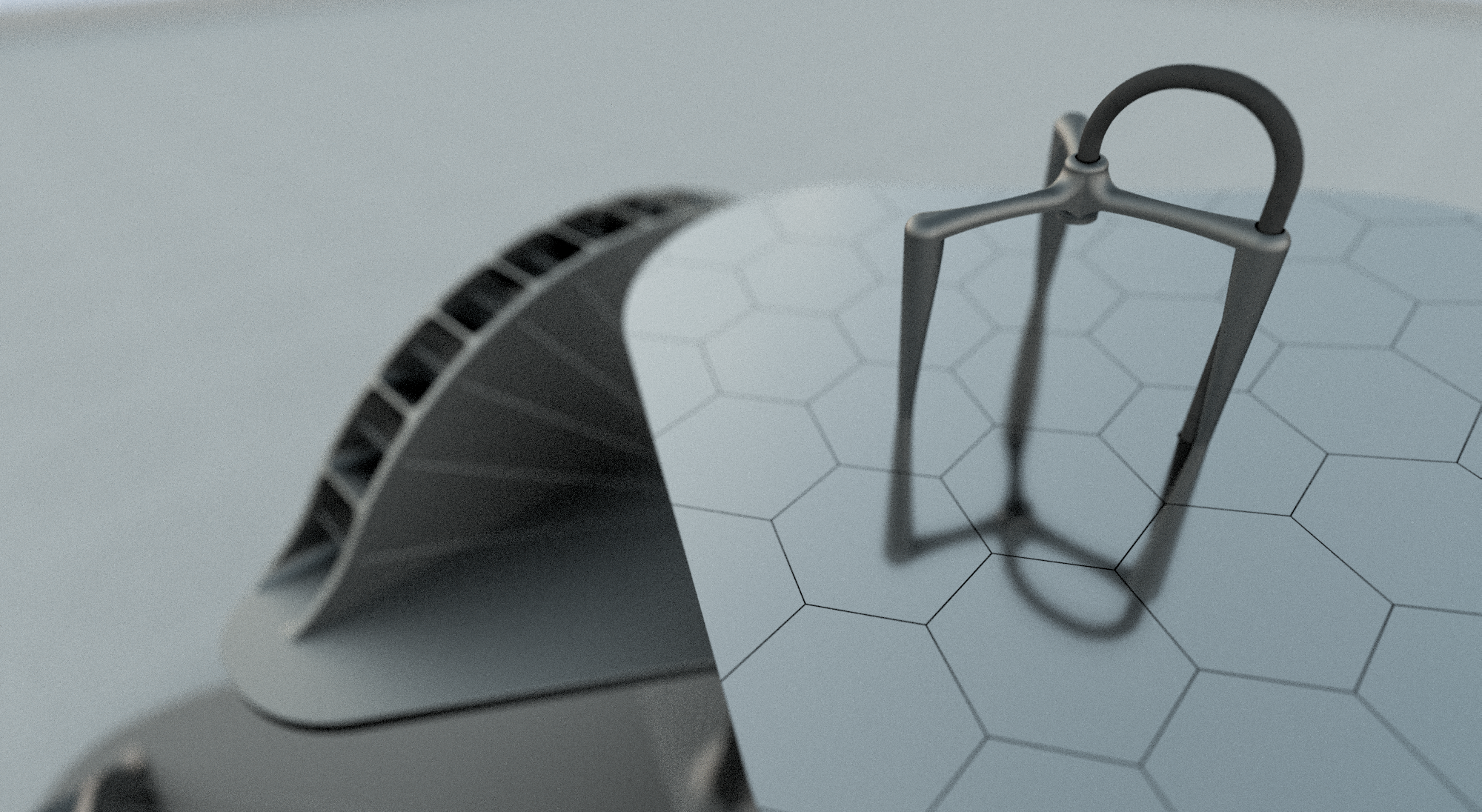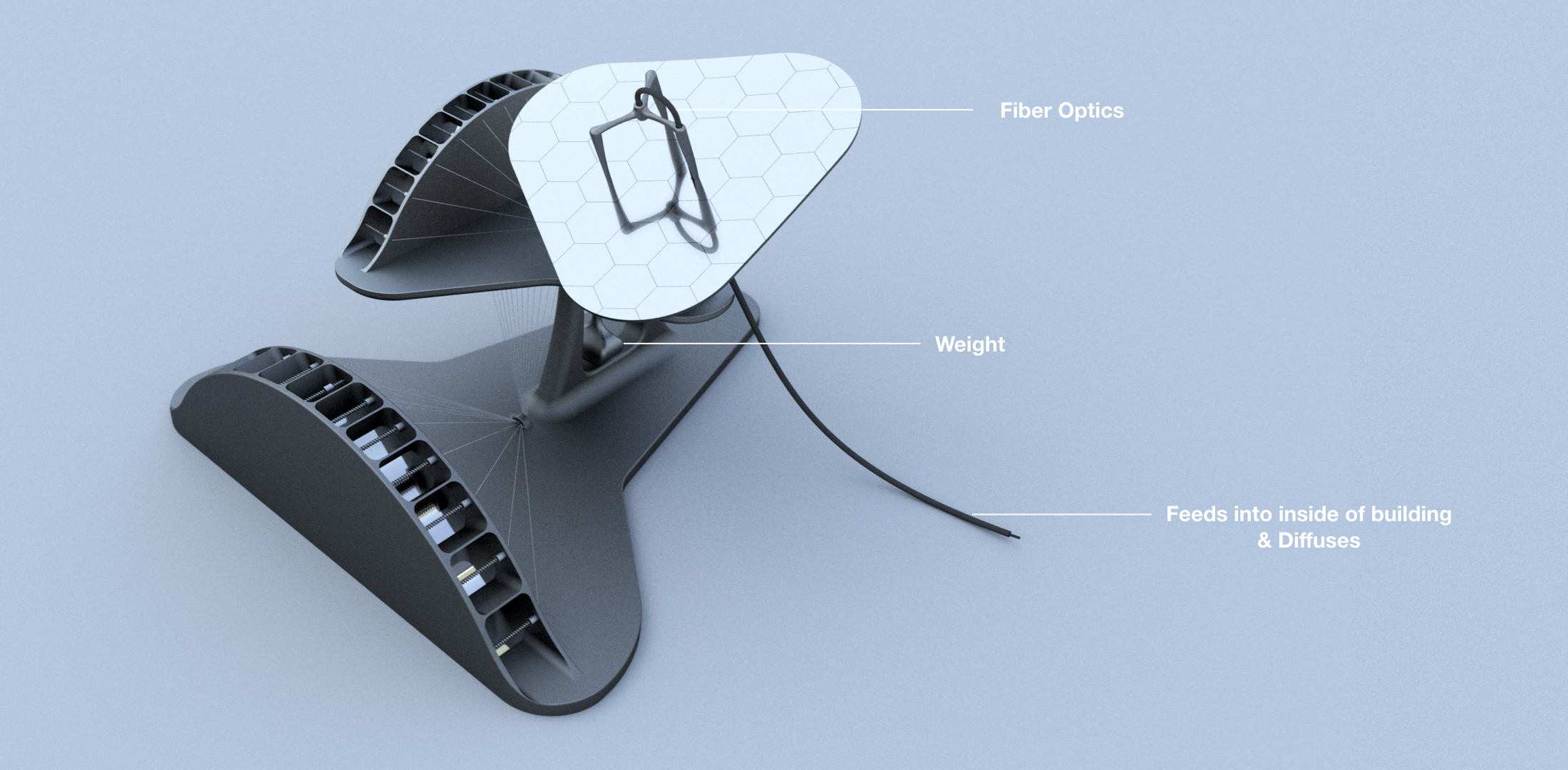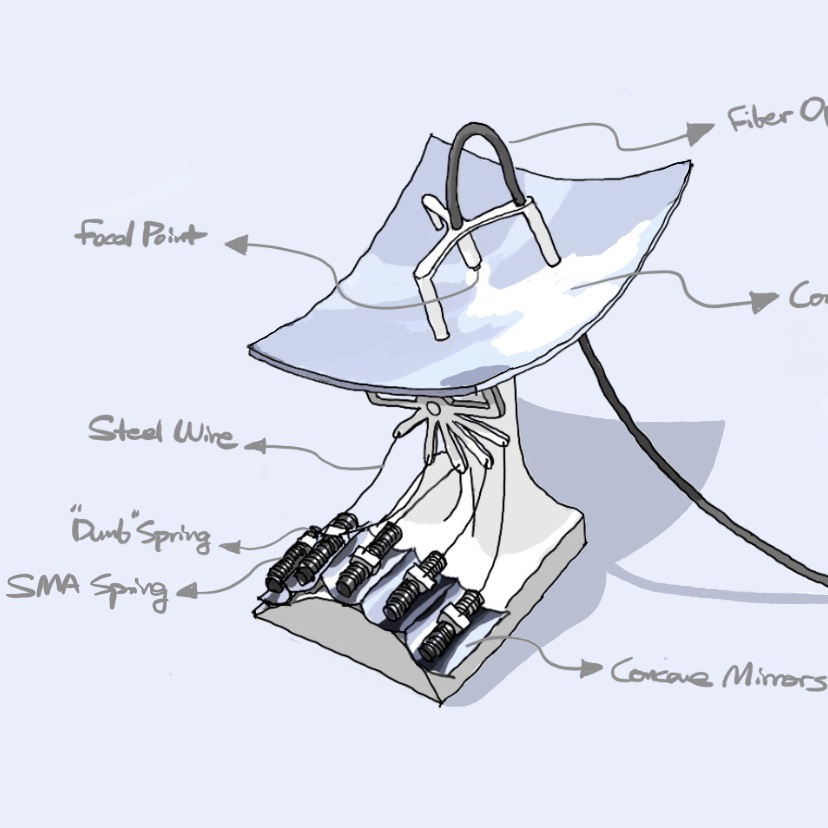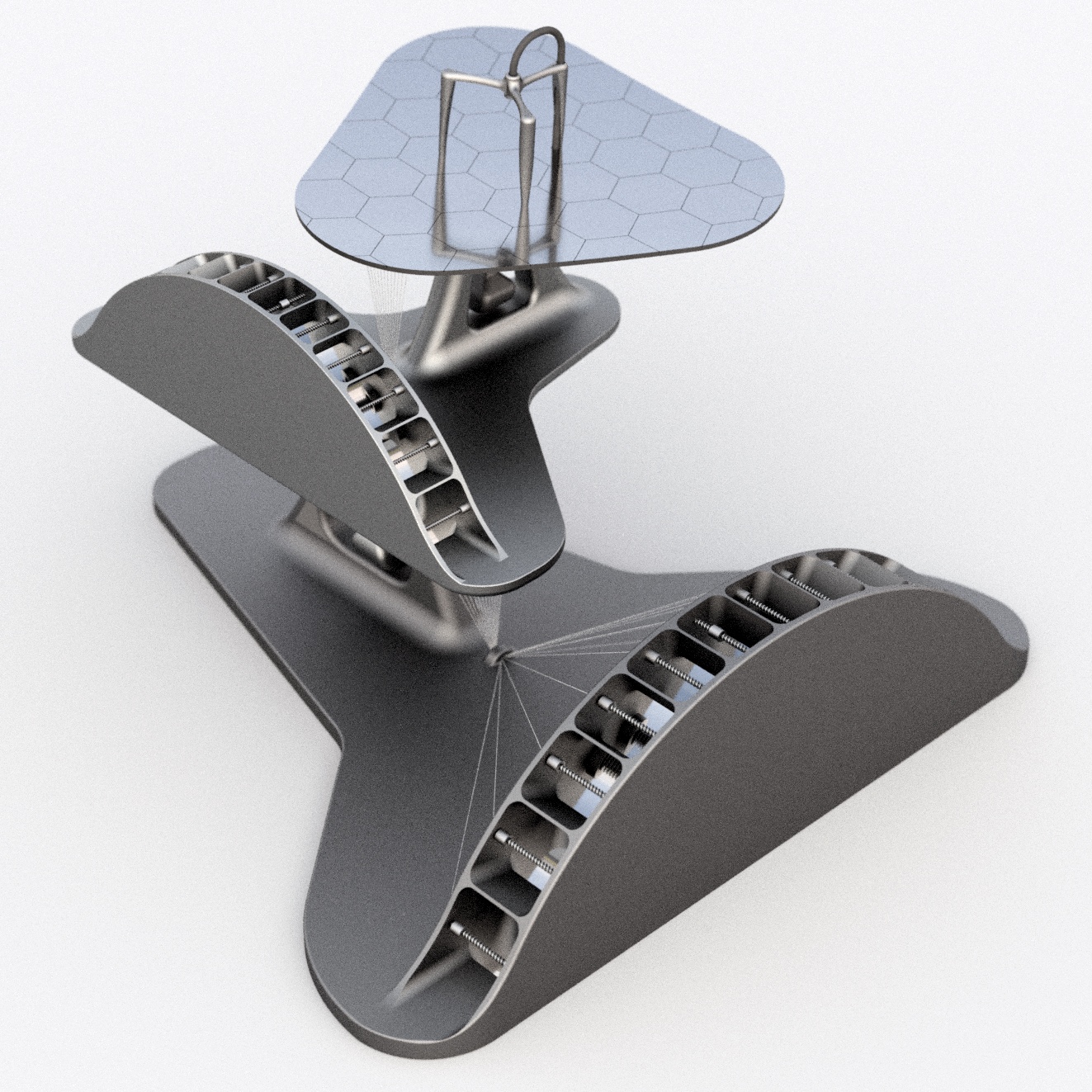
Sunlight Collector
Creator: Zhaorui Wang
Supervisor: Peter Yeadon
This materials-driven study conceives of interior lighting that does not require any electricity. With the help of shape-changing smart materials, a reflective surface directs and focuses sunlight toward fiber optics that convey the concentrated light to interior spaces, where it is diffused. Wang’s Sunlight Collector is obviously ideal for places where electricity is unavailable, but it also provides a green, cheap lighting solution that is a highly-adaptable source of natural light, for any interior space that fiber optics can reach.
One scenario for the Sunlight Collector would be interior urban farming, since it’s very difficult for natural light to penetrate the large, deep floor plates of former factories, warehouses, and office buildings, especially if they’re filled with plants. The Sunlight Collector could provide plants with natural light throughout an urban farm, while complementing and reducing the use of full-spectrum artificial lighting that urban farms typically use to simulate sunlight. And, because of the flexible nature of fiber optics, sunlight can be deployed wherever it is needed, providing a channel for large amounts of light to reach darkness.


The upper half of the Sunlight Collector is where the sunlight actually gets collected. It features a reflective surface that focuses the Sun’s light into one end of a fiber optic cable. But the Sun is constantly moving, so the lower half consists of a solar tracker that ensures the collector will always be directed towards the Sun. Most solar tracking devices currently on the market are motorized and computerized, but for this project, shape memory alloys (SMAs) with an activation temperature of 70 ºC were used as smart material actuators, driving the movement of the collector so that it can track the Sun as it heats the SMA springs.
The SMA solar tracker operates through two axes. The North-South axis is seasonal and the East-West axis is hourly. For each of the two axes, there are twelve SMA springs. Each SMA Spring is responsible for an hour or a month. Each SMA spring is partnered with a bias spring that holds it in a stretched position. Underneath each SMA spring, there is also a concave mirror. The concave mirrors are positioned at different angles.


When the Sun rises to a certain angle, sunlight will strike the most Easterly mirror and will be focused into a narrow beam. The SMA spring that’s on top of that mirror will heat up (to above 70 ºC), which causes it to contract. During its contraction, the SMA spring pulls and tilts the Sunlight Collector towards the direction of the rising Sun.
As the Sun continues its arc across the sky, it leaves the hot SMA spring, which cools down and is stretched out again, and moves on to warm up the next spring in the sequence, so that the Sunlight Collector continues to be pulled and tilted to face the Sun, as it moves Westward.
Previous Next
Back︎︎︎

